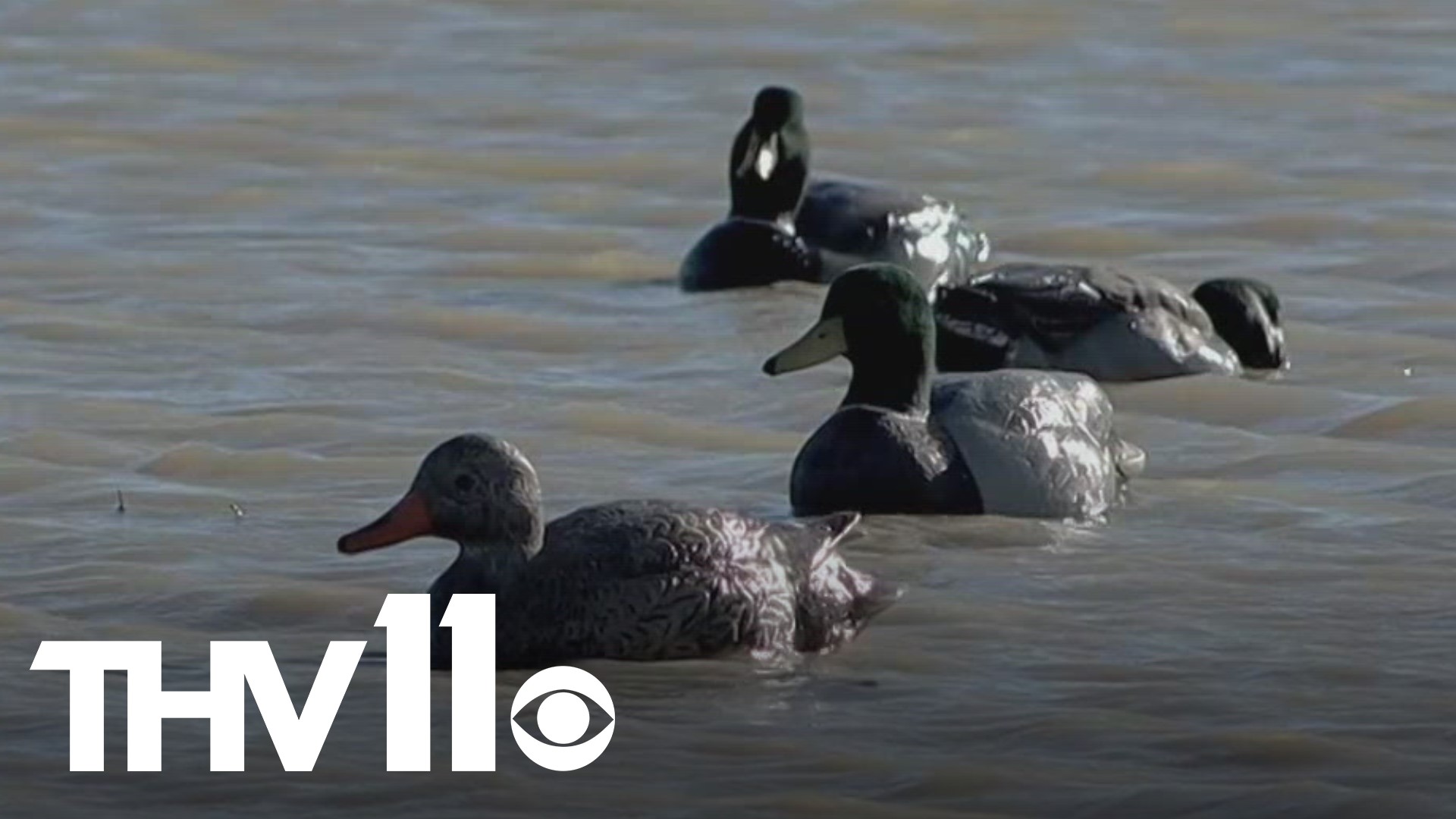ARKANSAS, USA — Duck hunting is one of Arkansas's most treasured traditions, and it has been passed down from generation to generation. Now that we're just days from the start of a new duck season, hunters have been wondering if this year will be any better than years past.
“Duck culture in Arkansas is passionate and intense. The tradition is still grounded in duck hunting. It's extreme, in a positive sense of that word,” said Luke Naylor, Chief Biologist for the Arkansas Game and Fish Commission.
For many years his job has been to protect Arkansas’s claim as the ‘duck capital of the world’. Though now, Naylor and his colleagues are now facing a new reality— fewer ducks all across North America.
“The breeding population count for mallards is down about almost 50% in the past six or seven years,” stated Naylor, citing data from the U.S. Fish and Wildlife Service’s annual Waterfowl Breeding Population and Habitat Survey.
There's no doubt this duck decline has been noticed by Arkansas duck hunters for the last several years, many of whom have had their own theories as to why fewer have been coming to Arkansas each winter.
For Naylor, the answer boils down to one thing— habitat.
Not just the habitat here in Arkansas, which is important, but the habitat conditions in the upper-Midwest and Canadian prairies are vitally important.
“But we can't forget that none of these ducks that are behind me right now were hatched in Arkansas. Zero," he explained.
For successful breeding and nesting, ducks need water. A years-long drought has plagued this critical area and continues to do so. While hunters and conservationists can’t make it rain, there are numerous other manmade contributions to degrading habitat conditions.
Naylor admits that many changes are happening across the landscape, but none more detrimental to waterfowl than the wetland and grassland loss where these ducks live the majority of the year before migrating to Arkansas.
“We know that grassland loss and wetland loss, there's really just kind of two key components there that we have to work on collectively as a conservation community. And there's kind of some trajectory that isn't all that positive in those regions right now. Particularly in the prairie pothole region, lots of grassland loss, lots of continued wetland loss," he described.
It’s a harsh reality that Naylor believes will continue to have consequences for some time.
“There is a concern there. That's not doom and gloom. But there is a reality that I think some duck hunters are going to face in the future that we may experience lower duck populations," Naylor added.
Despite these clear and present challenges, newly published research shows that ducks are still choosing to migrate to Arkansas more than any other state.
“We have good science coming out now that shows over a very long period of time that the place where mallards still show up in the harvest is the delta of Arkansas. That is the epicenter for mallard harvest. It was in the 1960s all the way up to 2020," he explained.
Naylor hopes this data will ease the concerns of Arkansas hunters, while also underscoring the importance of controlling what we can here in our own backyard— the habitat.
“In Arkansas, we still have the ability to have some control over our own destiny. Given the prairies keep sending us ducks. I think we're at a place where we can continue to provide habitat, continue to provide hunting opportunity and it's going to still continue to be really, really good down here," Naylor said.

